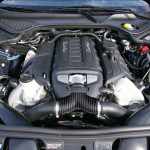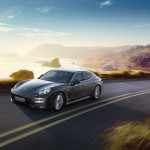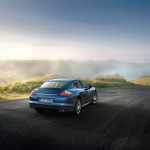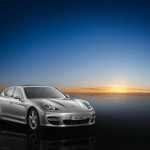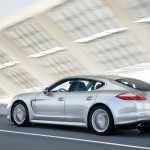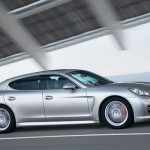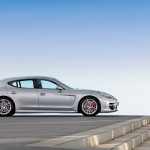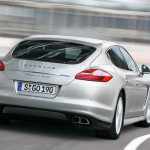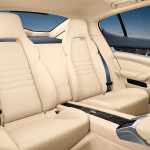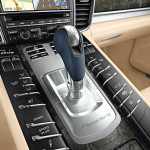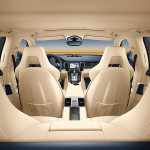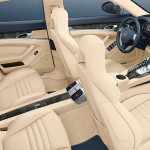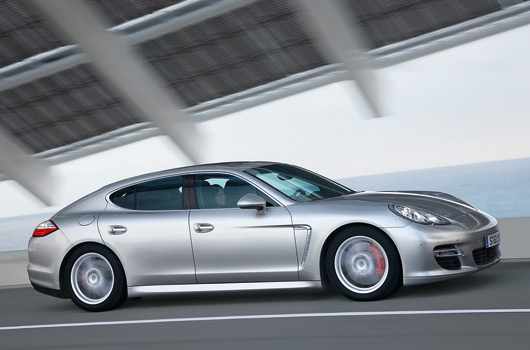
Let’s get this one out of the way early: Yes, the Panamera is all Porsche, and deserves its place among the rest of the brand’s revered portfolio. Ignore all the little voices chirping on about how since it has four doors, it can’t be a Porsche. Screw the voices – think of the Panamera as a 928 for the new millennium, and you’d be pretty close.
I had the chance to drive the Panamera on a couple of occasions. The first was at Road America with all three versions on both the track and the pastoral roads of Wisconsin, while the other was during the annual AJAC Test Fest in Niagara-on-the-Lake, ON, which focused more on street driving with a short airport circuit included too. There was not one situation where the Porsche felt at all out of sorts, out of breath or out of place.
First, some numbers.
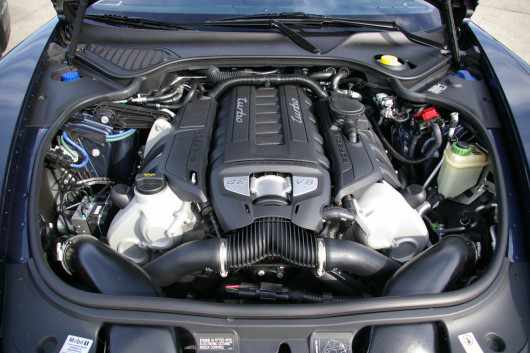
All versions of the Panamera are powered by a version of the 4.8-litre V8 – 400 hp in the S and 4S, but the Turbo, which we’ll focus on here, gets a stout 500 hp. It uses all-wheel drive, a tonne of electronic trickery and the seven-speed dual-clutch PDK gearbox to deliver ridiculous amounts of power to the road. The cars I drove also had the optional Porsche Active Suspension Management, which delivers ultimate control over the car’s corners. While regular 0-100 km/h runs happen in 4.2 seconds, equipping the Turbo with the SportChrono package adds a little feature called launch control, which pulls that figure down to 3.8 seconds. With four people on board. If you think that’s impressive for a 4400 pound sedan, consider this: one magazine claims to have nailed 60 mph (97 kph) from a standstill in 3.3 seconds. That’s as fast as the supercar-eating 2009 Nissan GT-R.
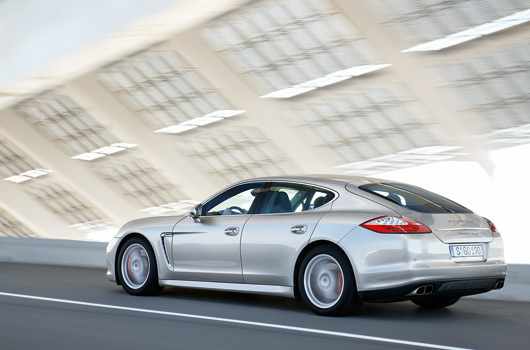
Experiencing this monster’s off-the-line behaviour is intense. And after spending a day lapping Road America with various Porsche hot-shoes riding shotgun, it eventually was time for their ‘revenge’. Sitting in the passenger seat next to six-time-Daytona 24 Hour-winning ‘surly’ Hurley Haywood is a treat. But hearing those 500 horses straining against the big, Porsche-branded brakes before launching down the front straight while your noggin’ hits the headrest is surreal. From the outside, the sounds are pure Top Gun – an F18 getting thrown into the air by a big, incomprehensible force.
Reaching that first corner at about 200 km/h is hugely impressive for something that has four doors. The fact that it doesn’t feel like a bloated moose when you turn the steering wheel is even more so. Porsche did a stunning job keeping the weight down – regular S models are just a shade under 4,000 lbs, or much less than an SRT Challenger and on par with a Camaro SS. The Panamera simply resets every expectation you have about luxury sedans, because the typical S Class/7-Series/A8 would never, ever reach those levels of g-forces.
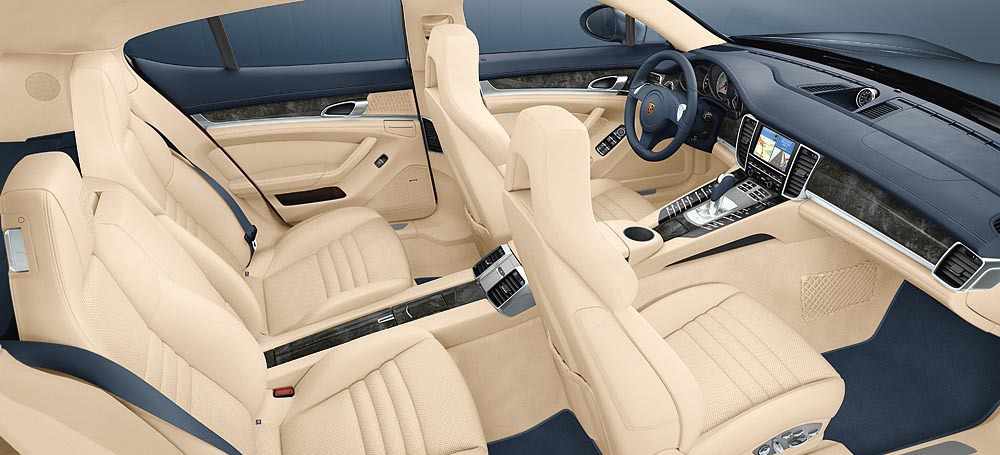
Luckily, Porsche worked just as hard inside to keep you cosseted and comfortable in the most extreme situations. The four seats are essentially the same, and the long wheelbase ensures plenty of legroom for six-foot-three me sitting ‘behind’ myself. The centre console that splits the car lengthwise contains all the toys you’re looking for: two perfectly aligned rows of shiny black buttons that activate the sport settings, sport exhaust, ride height, PSM, and all the HVAC controls above them. The touch-screen nav system is much easier to use than Porsche’s old version. And one of the dials in the binnacle is actually a switchable screen that can shuffle through a map, radio controls, chonometre, and trip computer.
Thankfully, the quality of materials used is a significant step up over the Boxster and Cayenne. No chintzy plastics in sight – only high-quality leathers, wood, aluminum, carbon fibre and more. Plus, like all Porsches, you can get downright crazy with the options list. Four- and five-figure additions like the carbon-ceramic brakes and colour-matched leather-wrapped air-vent fins are the sublime and the ridiculous.
The main complaint on how the driver connects with the cabin is the PDK’s steering-wheel mounted ‘toggles’. Unlike the new Turbo, which now gets an optional steering wheel with authentic paddles, the Panamera does with the old-style push-to-downshift, pull to upshift, regardless of side. It’s difficult to get used, but until then, even Haywood lets the computers do the shifting for him.
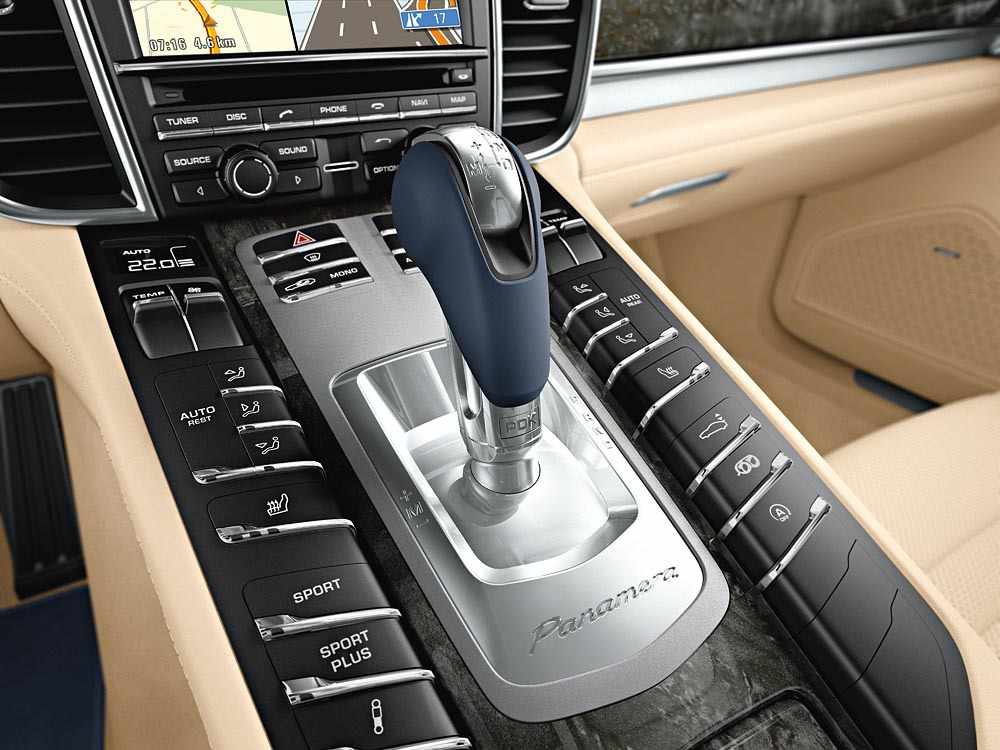
Even the hatchback access trunk is capable of hauling some large, awkward objects.
And speaking of awkward, the exterior styling isn’t nearly as polarizing in person. Once all the Porsche cues were pointed out by the company’s designers, the Panamera truly does fit the mould. One complaint, however, is that the Turbo isn’t distinguished enough from the more proletarian V8 versions. Only chrome side vents, a two-piece retractable spoiler and subtle badging are the only clues. Even the standard wheels are shared with the 4S, although the optional designs are worthy, especially the Turbo IIs.
Somehow, when you find out that the Turbo starts at $155,000, it really doesn’t shock or surprise. Compared to its ‘competition’, nothing touches it for the performance, and while ultimate luxury isn’t at the top of the Panamera’s priority list, it accomplishes that task with aplomb. When the next 760iL or S65 AMG goes sub-eight minutes on the ‘Ring, we’ll talk.
Price as tested: $172,300
Summary: You won’t travel faster with three friends.
Exterior Design: 6/10. Not as bad as you think.
Interior Design: 9/10. No sedan delivers a better space to drive from.
Engine: 9/10. Whoa-momma power.
Transmission: 7/10. PDK delivers power smoothly. Can only wish for real shift paddles.
Audio/Video: 8/10. Nav/audio system built for humans to use. ‘Trick’ gauge a sneaky way of getting information.
Value: 8/10. An S65 AMG starts at $233K.
Overall (not an average): 9/10
By Mark Atkinson


